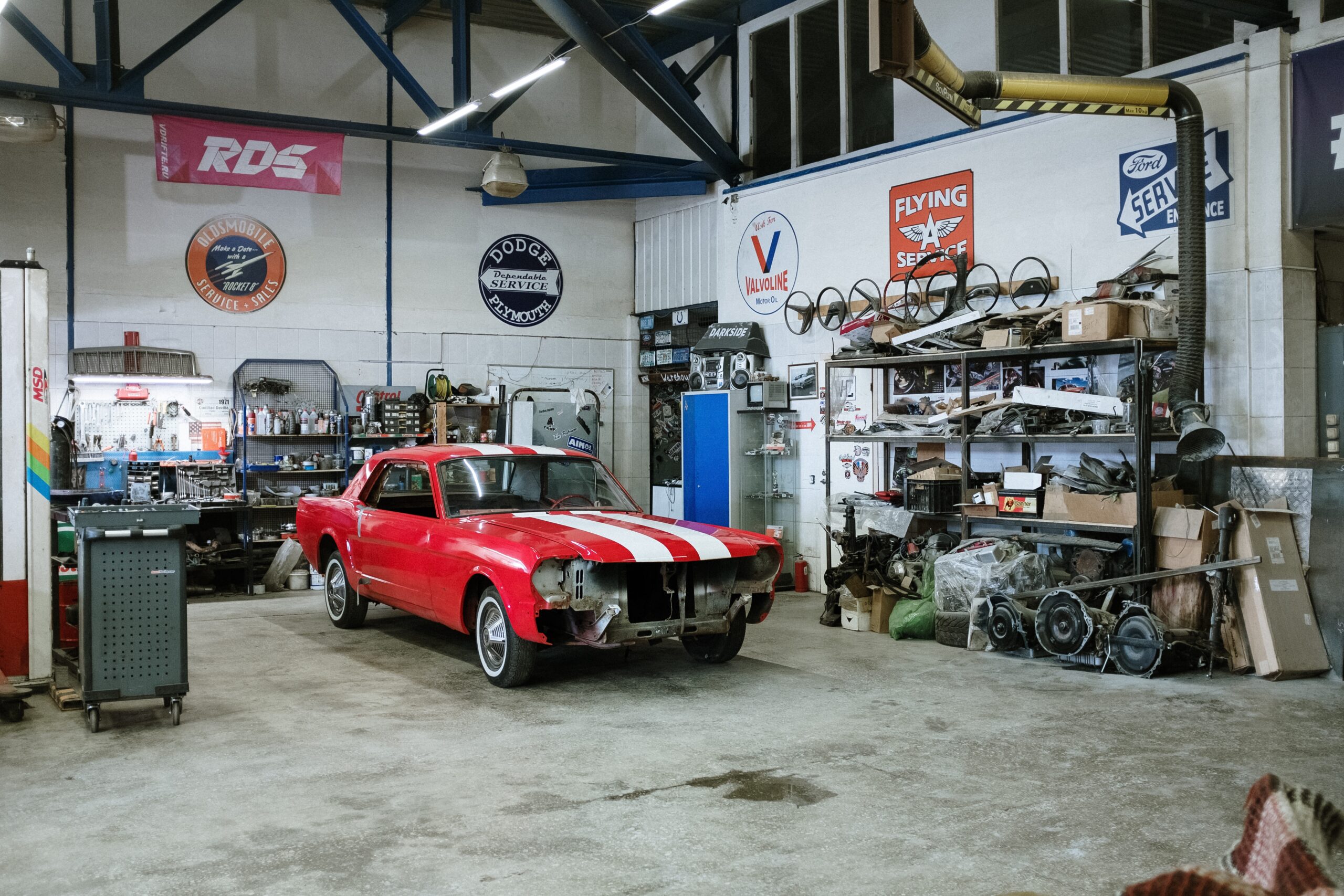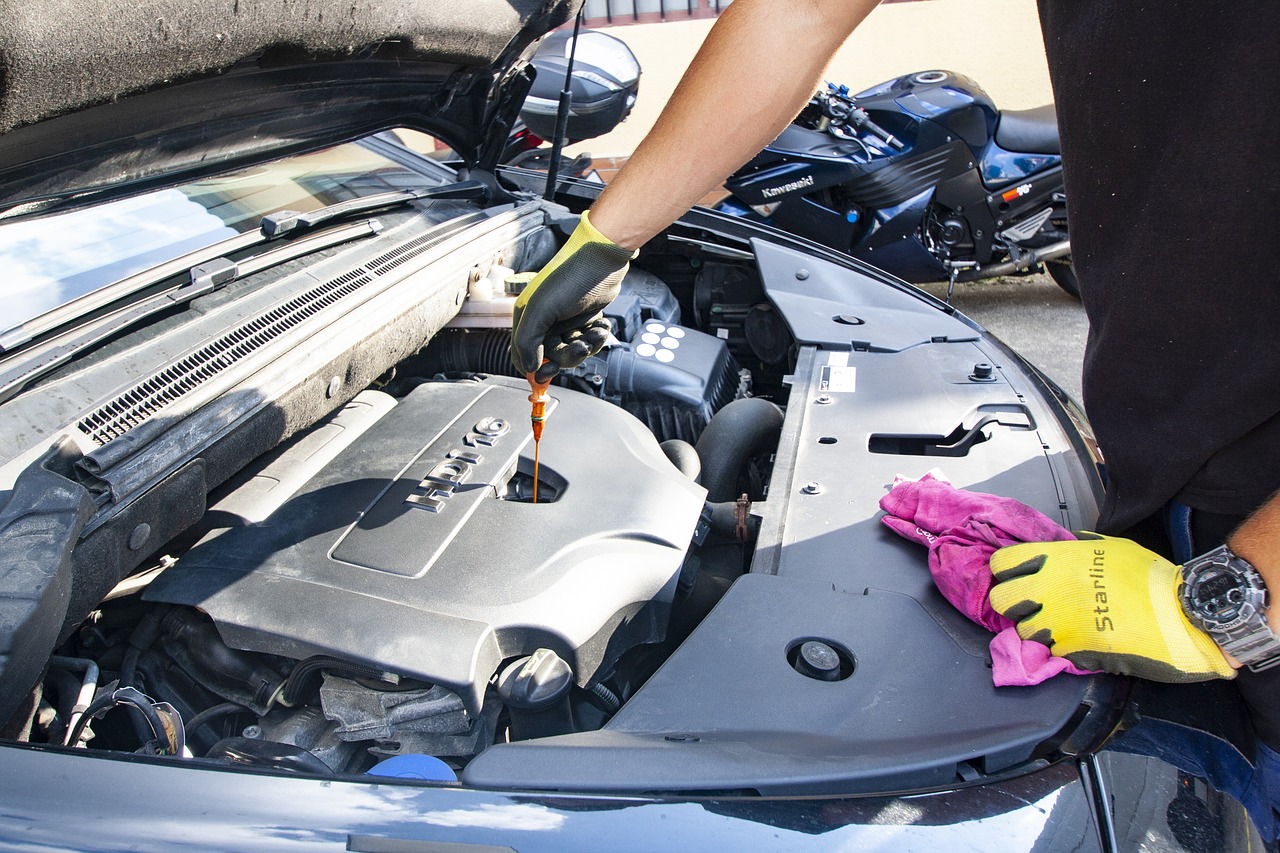Best tips for setting up your own home car workshop

A home garage can be used for basic maintenance and vehicle upkeep. That will save you long trips to the mechanic and possibly save you some money.
Having a garage workshop or garage at home can have its perquisites for anyone who works on cars as a profession or hobby.
In addition, when around the home, some minor problems with the vehicle ought to occur. These problems call for quick fixes that should not merit a visit to the mechanic.
Therefore, having a garage workshop around your home that is solely dedicated to repairing your car is a great idea.
Read more: 7 Car parts replacements and repair tasks you should not do yourself
7 tips and ideas on how to setup a home car workshop
1. Evaluate the workspace
The initial step towards creating a garage workshop is to assess the workspace you will be working with. You must first determine what activities will be going on in that space.
For some, who may have a small space, use it to store simple tools and set aside a workbench.
If you have larger floor space, you may use it to park the vehicle and have a space for the storage of power tools and other items necessary for car repairs.
During the assessment, take into consideration how many tables you would like, what tools you have, and what tools you intend to acquire in the future. You may also consider having a second vehicle bay if you plan to get a second car.
Furthermore, you must consider where you will be storing car parts, metal scraps, and other workshop materials. It might also be a great idea to install an air conditioner or furnace if you have a cold cement floor or depending on your area of residence.
2. Create a layout for the home car workshop
How a mechanic’s garage is arranged is very important. If the car workshop is not adequately organized, it will become messy and possibly play a role in slowing down a project you will be working on.
Do not undermine the power of a good workshop layout plan on your garage. Many professionals advocate for triangular tool storage ideas.
One corner is solely dedicated to tool storage to ensure they are easily accessible in this layout. You will store toolboxes, power tools, and spare parts you may need in this space.
As an additional tip, it is always great advice to create a shelf space to avoid cluttering the tool storage area. Shelves are easy to install and can be added to any wall.
In the second corner, this is where the cars will be parked. If you want to go a step further, you can install a lift while working underneath the vehicle.
Moreover, if you have a smaller workspace, you may use this space to work on body panels and other big pieces.
The last corner of the workshop layout should be used for fine-tuning. In this storage space, make use of more shelf space to store small power tools and other hand tools.
3. Install car lifts
A car lift can be a big investment, but it’s worth the cost. Not having to lie on your stomach while working in or under my vehicle means more time for other things like family!
A car lift is functional, saves time and hassle while working on cars. You can easily access all areas of the vehicle by raising it to an appropriate height – great if you have limited space.
There’s more than one type of car lift available for purchase, for example, four post lift, scissor lifts and in-ground auto lifts so it might take some research before deciding which is best for what kind of vehicle or job site situation
4. Install a sub-panel
Sub-panels are lifesavers for any home garage workshop. They provide the owner with enough power so you will never have to worry about a power shortage when you are working on a project.
Additionally, you can install a subpanel for safety reasons. That is because if the main panel is full such that the wires resemble a crowded maze, it can be used as an alternative.
They are also used alongside the main panel just in case it fails.
5. Focus mainly on safety
Safety should be a priority when putting up a home workshop. If things go sideways, the repercussions might be disastrous. Safety is essential because you will be using high-risk tools that need steady hands to operate most of the time.
It is a great idea to have the right tools such as hydraulic car jack stands on standby when building on the safety aspect. The car jack stand raises the car and makes it easier for you to work underneath without worrying the car might fall.
Additionally, do not just go for a cheap floor jack. It is advisable to purchase excellent heavy-duty jacks that are far more efficient. They are indeed more costly; however, your mind will be at ease when working on a vehicle.
6. Ensure there is good lighting
A well-lit workshop is safe and efficient. If you have poor lighting, likely, you will not have any visibility of what you are doing. This could cause expensive mistakes that you would have easily avoided.
When designing the workshop, include an air compressor, large windows, and even a translucent roof to allow natural light to permeate for good lighting. That will come in handy during the day.
If you intend to keep working even at night, install sufficient artificial lighting that will be just as effective as the day’s natural light. Do not depend on a headlamp to guide you through repair projects.
7. Take into account your comfort.
When setting up the garage, you might be carried away by the functionality and sticking within the budget constraints. You may therefore forget that your comfort inside that garage is also important.
It is important to remember that you will be spending a lot of time in that workshop. Hence, it might be a great idea to make it comfortable so that you do not end up with backaches and other problems that an ergonomic workspace could have avoided.
Wrapping up
When you finally setup the home workshop, make sure you have drawn inspiration from some of the home car workshop ideas included in this post.
Ensure that you have enough lighting, internet access, hydraulic jack stands for safety, and take your comfort into consideration because you will be spending a significant amount of time in the garage.
Furthermore, it is also essential to determine the source of finance before embarking on this journey and selecting a good storage solution for the tools.
Finally, if you are in the market for car spares parts, visit autoparts24.com for some of the best prices in town. Here, you will find used car parts online for any car model that you may need in your garage. The products are quality guaranteed.
Starting problems? Top 9 reasons why your car does not start
Cars fail to start faster than they used to because of various reasons. It is a common symptom associated with various problems within your engine. But one thing to be glad about is that these problems are repairable. However, it…
Read more
DIY Car Maintenance and Repair Tasks
Regular car maintenance is critical to keeping your vehicle in good condition and running smoothly. It can also save you money in the long run by preventing more expensive repairs. Besides that, well-maintained vehicles have the least chance of leaving…
Read more
What’s that smell from my car? Top causes and cures
Many people often know there is something wrong with the engine from the sounds under the hood. However, you can also use your other sensory organ, the nose, to diagnose problems with your engine. Any smell that is out of…
Read more
Top guides
- Injection system in the car explained simply - parts and function of the injection...
- Maintenance and repair of electric cars: what can your normal garage do?
- Increasing performance with chip tuning: benefits, risks and tips
- Guide: Computer systems and software in your car
- Which electric car parts need repair or replacement most often?
- What is a solid-state battery for electric cars?
- All about engine sensors: from combustion engines to electric cars
- Increase the range of an electric car: How every electric car gets further
- Electric car battery life: How to extend the life of the battery
- What is the compression of a car engine?
- This is the cubic capacity of a car engine
- Internal combustion engine valves: function, defects and repair
- Core components of the internal combustion engine - parts and functions
- Engine lubrication in cars: components, function and defects
- The environmental impact of manufacturing new car parts
- All about pollutant classes and their role in environmental protection
- Engine overhaul: What is an engine overhaul and how much does it cost?
- OEM car parts manufacturing: the key components of the sector
- Understanding engine power - insight into the technology of the car engine
- The steering system of the car - structure and operation
- The car's braking system - structure, parts and function
- Engine types in the car: V-engine, in-line engine and boxer engine explained
- 8 tips before buying a used electric car
- Distinguish OEM parts, aftermarket and counterfeit car parts
- The EPC indicator light is on or flashing: What to do?
- Master brake cylinder: function, defect detection and repair
- OEM car parts for hybrid and electric cars
- Used youngtimer and classic car parts - the best tips
- Cruise control: Function and repair of the cruise control system in the car
- Exhaust system: Everything you need to know about parts and function of the exhaus...
- Locking system: security and reliable locking on the car
- The engine's air intake system - parts, function and replacement
- Brake caliper defective? How to replace it yourself
- Fuel system: parts of the fuel supply from the tank to the cylinder
- Air conditioning system: function and components of your car air conditioning syst...
- The clutch: structure and function explained simply
- Detecting and replacing a defective fuel pump
- Surprised? So many pumps work in your car
- The most common causes of a defective electric car
- The 6 most important safety components of your car
- Identify and repair a defective starter in a flash
- 5 common chassis problems and how to fix them
- 10 unknown car parts that many drivers do not know about
- Engine cooling: function and important components of the cooling system
- Differences between petrol and diesel engines
- All-wheel drive: How the mechanics and components of all-wheel drive work
- Engine control unit car: Everything about components and functioning
- Defective engine control unit: causes, symptoms and repair
- HP vs. torque: What is the difference between power and torque?
- EV motors basics: How are they built, how they work and differ from combustion eng...
- The chassis: overview and function of all suspension components
- Used electric car parts: What to look out for
- The importance of the chassis number when buying used car parts
- ABS pump defective? Function, repair and replacement
- Injection nozzle defective? Diagnosis, cleaning and changing the injection nozzles
- Alternator defective? What symptoms occur and when to change the component
- Water pump defective? Symptoms and how to repair or change it
- Steering gear defective? What are the symptoms and when should the component be re...
- Lambda sensor defective? What are the symptoms and can I clean the sensor?
- Defective air conditioning compressor - what are the symptoms and when should the ...
- Intake manifold defective? Replace gasket or clean manifold?
- Exhaust manifold leaking? Symptoms of a defective exhaust manifold or gasket and w...
- Turbocharger defective? Repair or change?
- Servo pump defective? What symptoms occur and when you should change the part
- Clutch broken? - These symptoms indicate a defect in the clutch
- Common problems and repair of defective drive shafts
- Causes of engine noise and what to do about it?
- What can car diagnostic devices do and do I need an OBD scanner?
- When and how to replace brake discs and brake pads
- Brake warning lamp lights up - causes and what to do?
- EGR valve defective: Avoid engine problems and clean EGR valve
- Improve fuel consumption: How your car uses less fuel
- Squeaking brakes: Why brakes squeak and how to get rid of it
- Safely jacking up a car: How to jack up a car using a jack and jack stands
- How a defect in the muffler becomes noticeable and how it is replaced
- E-car motor: These electric car parts you can replace yourself
- Engine overheated: What you should do if the engine overheats
- Engine check lamp lights up: What you should do as a motorist
- The engine code: What does the code mean and where can I find it on the car?
- Tools for car repair: These 10 tools you should own
- Car repair mistakes: These are the 7 most common car repair mistakes
- The gearbox code: What does the code mean and where can it be found on the gearbox...
- Used parts: How to check the quality of used car parts
- Vehicle transmission: What is the difference between manual and automatic transmis...
- Mileage: This is how mileage affects used spare parts
- Car recycling: What happens to the car when it is recycled?
- OEM original parts or aftermarket: these are the differences
- Advantages and disadvantages of new and used car parts
- Starting problems? Top 9 reasons why your car does not start
- What’s that smell from my car? Top causes and cures
- Advantages of shopping scrap car parts online vs. going to the local breaker yards...
- 10 most frequently purchased car parts from car breakers/junkyard
- Important car parts and their function
- Common car engine problems: Diagnosing, Troubleshooting and Fixes
- Best tips for setting up your own home car workshop
- 7 Car parts replacements and repair tasks you should not do yourself
- DIY Car Maintenance and Repair Tasks
- Guide: How to Maintain and Protect Your Car Engine
- Best practices for Engine Rebuild
- Common Causes of Rear Differential Noise, troubleshooting, and how fix it
- Common Causes of power steering noise and how fix it
- Your Guide to Car Engine Components and Functions
- Licence plate and VIN information
- Top 10 of the most popular brands in second-hand autoparts
- France is just so cool


